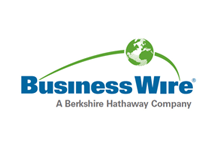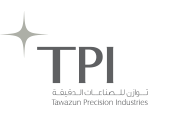Global Nanocellulose Market, Production and Pricing Report 2021 - ResearchAndMarkets.com
The "The Nanocellulose Market, Production and Pricing Report 2021" report has been added to ResearchAndMarkets.com's offering.
Nanocellulose (NC) materials are novel biomaterials with multiple industrial uses for replacing fossil derived raw materials. These materials are renewable, eco-friendly, have excellent mechanical properties, good biocompatibility, and tailorable surface chemistry. The addition of NC materials into polymers can enhance mechanical strength and reduce weight compared to fiber-reinforced plastics (FRP).
The market mainly consists of cellulose nanofibrils (CNFs) production at present as alternatives to resins, synthetic thickeners, strengtheners, and plastics. Cellulose nanofiber products have already hit the market, mainly in Japan, and are viewed as important advanced biomaterials solutions in the packaging and composites markets.
Cellulose nanocrystals (CNCs) possess many desirable properties such as high surface area, hydroxyl groups for functionalization, colloidal stability, low toxicity, chirality and mechanical strength. Recent increases in production capacities are bringing CNCs to market in oil and gas fluids, adhesives, paper products, textiles, cement, plastics and composites, paints and coatings, personal care, healthcare, food and beverages and electronics.
Current production capacity for NC materials exceeds the market demand at present, but this is likely to change as prices drop in the next few years, and there is less distance to fall than with other nanomaterials as cellulose nanofibers are broadly cost competitive. Producers have already begun to produce additives that are competitive with conventional polymer composites (e.g. carbon fibers). The growth in interest in sustainable products will also greatly drive demand.
Key Topics Covered:
1 EXECUTIVE SUMMARY
1.1 Why nanocellulose?
1.2 The market in 2019
1.3 The market in 2020
1.4 Future global market outlook
1.5 Global nanocellulose production
1.5.1 Total global production capacity 2020, by type
1.5.2 Cellulose nanofibers (CNF) production capacities 2020, by producer
1.5.3 Microfibrillated cellulose (MFC) production capacities 2020
1.5.4 Cellulose nanocrystals (CNC) production capacities 2020
1.6 Global nanocellulose market demand, 2018-2030, tons
1.7 Market impact from COVID-19 pandemic
2 OVERVIEW OF NANOCELLULOSE
2.1 Cellulose
2.2 Nanocellulose
2.3 Properties of nanocellulose
2.4 Advantages of nanocellulose
2.5 Manufacture of nanocellulose
2.6 Production methods
2.7 Types of nanocellulose
2.7.1 Microfibrillated cellulose (MFC)
2.7.2 Cellulose nanofibers (CNF)
2.7.2.1 Applications
2.7.3 Cellulose nanocrystals (CNC)
2.7.3.1 Synthesis
2.7.3.2 Properties
2.7.3.3 Applications
2.7.4 Bacterial Nanocellulose (BNC)
2.7.4.1 Applications
2.8 Synthesis
3 NANOCELLULOSE PRICING
3.1 Cellulose nanofiber (CNF)
3.2 Cellulose nanocrystal (CNC)
3.3 Bacterial nanocellulose (BNC)
4 NANOCELLULOSE IN COMPOSITES
4.1 Market overview
4.2 Market prospects
4.3 Applications, key benefits and motivation for use, megatrends, market drivers, technology drawbacks, competing materials, material loading, main global composites OEMs.
4.4 Applications map
4.5 Global market in tons, historical and forecast to 2030
5 NANOCELLULOSE IN AUTOMOTIVE
5.1 Market overview
5.2 Market prospects
5.3 Applications, key benefits and motivation for use, megatrends, market drivers, technology drawbacks, competing materials, material loading.
5.4 Applications map
5.5 Global market in tons, historical and forecast to 2030
6 NANOCELLULOSE IN CONSTRUCTION
6.1 Market overview
6.2 Market prospects
6.3 Applications, key benefits and motivation for use, megatrends, market drivers, technology drawbacks, competing materials, material loading.
6.4 Applications map
6.5 Global market in tons, historical and forecast to 2030
7 NANOCELLULOSE IN PAPER AND BOARD PACKAGING
7.1 Market prospects
7.2 Applications, key benefits and motivation for use, megatrends, market drivers, technology drawbacks, competing materials, material loading.
7.3 Applications map
7.4 Global market in tons, historical and forecast to 2030
8 NANOCELLULOSE TEXTILES AND APPAREL
8.1 Market overview
8.2 Market prospects
8.3 Applications, key benefits and motivation for use, megatrends, market drivers, technology drawbacks, competing materials, material loading
8.4 Applications map
8.5 Global market in tons, historical and forecast to 2030
9 NANOCELLULOSE IN MEDICINE AND HEALTHCARE
9.1 Market overview
9.2 Market prospects
9.3 Applications, key benefits and motivation for use, megatrends, market drivers, technology drawbacks, competing materials, material loading.
9.4 Applications map
9.5 Global market in tons, historical and forecast to 2030
10 NANOCELLULOSE IN PAINTS AND COATINGS
10.1 Market overview
10.2 Market prospects
10.3 Applications, key benefits and motivation for use, megatrends, market drivers, technology drawbacks, competing materials, material loading.
10.4 Applications map
10.5 Global market in tons, historical and forecast to 2030
11 NANOCELLULOSE IN AEROGELS
11.1 Market overview
11.2 Market prospects
11.3 Applications, key benefits and motivation for use, megatrends, market drivers, technology drawbacks, competing materials, material loading.
11.4 Global market in tons, historical and forecast to 2030
12 NANOCELLULOSE IN OIL AND GAS
12.1 Market overview
12.2 Market prospects
12.3 Applications, key benefits and motivation for use, megatrends, market drivers, technology drawbacks, competing materials, material loading.
12.4 Global market in tons, historical and forecast to 2030
13 NANOCELLULOSE IN FILTRATION
13.1 Market overview
13.2 Market prospects
13.3 Applications, key benefits and motivation for use, megatrends, market drivers, technology drawbacks, competing materials, material loading.
13.4 Applications map
13.5 Global market in tons, historical and forecast to 2030
14 NANOCELLULOSE IN RHEOLOGY MODIFIERS FOR COSMETICS, PHARMA AND FOOD ADDITIVES
14.1 Market overview
14.2 Market prospects
14.3 Applications, key benefits and motivation for use, megatrends, market drivers, technology drawbacks, competing materials, material loading.
14.4 Applications map
14.5 Global market in tons, historical and forecast to 2030
15 OTHER MARKETS FOR NANOCELLULOSE
16 CELLULOSE NANOFIBER COMPANY PROFILE
17 CELLULOSE NANOCRYSTAL (CNC) COMPANY PROFILES
18 BACTERIAL CELLULOSE (BC) COMPANY PROFILES
19 RESEARCH SCOPE AND METHODOLOGY
19.1 Report scope
19.2 Research methodology
20 REFERENCES
Companies Mentioned
- Asahi Kasei
- CelluComp Ltd.
- Chuetsu Pulp & Paper Co., Ltd.
- Daicel
- Daio Paper Corporation
- DKS Co. Ltd.
- SAPPI
For more information about this report visit https://www.researchandmarkets.com/r/mxu3lp
View source version on businesswire.com: https://www.businesswire.com/news/home/20210315005415/en/



